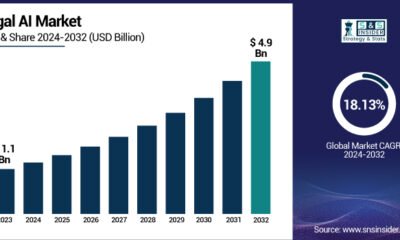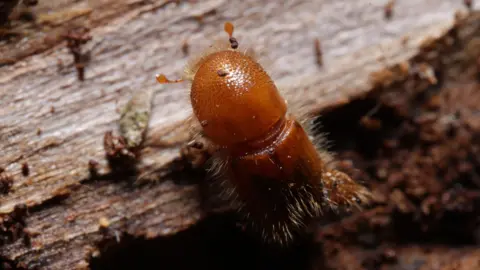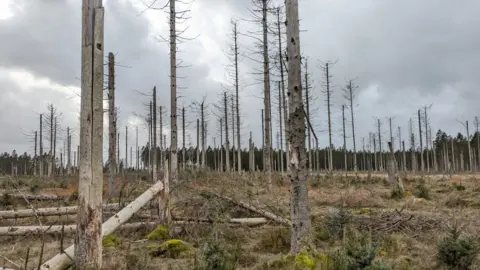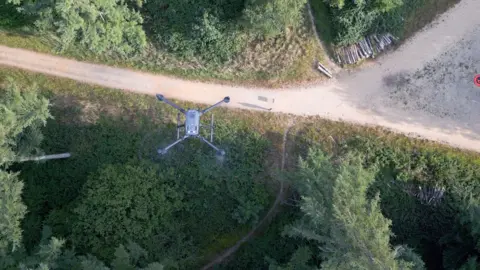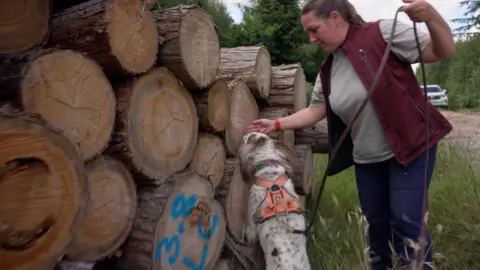Austin, July 23, 2025 (GLOBE NEWSWIRE) — Autonomous AI and Autonomous Agents Market Size Analysis
The SNS Insider report indicates the Autonomous AI and Autonomous Agents Market size was valued at USD 7.4 billion in 2023 and is estimated to reach USD 86.9 billion by 2032, expanding at a CAGR of 36.59% over the forecast period of 2025–2032.
The U.S. Autonomous AI & Autonomous Agents market is witnessing a healthy growth trajectory due to early technology adoption, strong R&D investments, and enterprise digital transformation initiatives. The market was valued at USD 1.0 billion in 2024 and is projected to reach USD 13.4 billion by 2032, growing at a CAGR of 37.89% during 2025–2032. Expanding use in BFSI, defense, and healthcare sectors will fuel sustained demand through the forecast period.
Get Free Sample Report of the Autonomous AI and Autonomous Agents Market: https://www.snsinsider.com/sample-request/6900
Major Players Analysis Listed in this Report are:
- IBM
- Google DeepMind
- Microsoft
- Amazon Web Services (AWS)
- OpenAI
- NVIDIA
- Tesla
- Baidu
- SoundHound AI
- Oracle
- Others
Segment Analysis
By Component: Software Segment Leads While Services Witness the Fastest Growth
The software segment dominated the Autonomous AI and Autonomous Agents Market in 2024 and accounted for 44% of revenue share, due to the critical role played by AI software platforms, machine learning frameworks, and orchestration tools crucial for building and deploying autonomous agents. These software layers play a critical role in supporting context-aware interactions, policy-driven decisions, and secure or open integrations across environments. AI-enabled SaaS platforms are expected to support this dominance through 2032, but vertical-specific solutions are increasingly more important in the case of BFSI, healthcare and manufacturing sectors.
The services segment is projected to grow at the fastest CAGR during 2025–2032. Due to rising demand for custom AI training, consulting, integration, and support services. This increase in demand for managed AI services and professional support globally is because organizations want domain-specific expertise, operationalized autonomous AI with built-in governance and ethical compliance, and near real-time performance optimization.
By Deployment: Cloud Takes the Lead While On-Premises Sees Agile Uptake
The cloud deployment model dominated the market in 2024 and accounted for 53% of revenue share, due to its flexibility, scalability, and the fast adaptability it provides organizations deploying autonomous AI agents. Cloud platforms deliver convenient access to computing resources and high-performance AI models, meaning they are the perfect playground for hosting distributed autonomous systems like retail chatbots, fraud detection bots, and virtual assistants. This segment will retain its dominant position through 2032, as hyperscalers including AWS, Azure, and Google Cloud are investing in autonomous AI infrastructure.
The on-premises deployment model is expected to register the fastest CAGR during the forecast period. In sectors like healthcare, finance, and government, where the circulation of sensitive data is strictly regulated, private IT infrastructure is seeing a growing deployment of autonomous agents. This is expected to drive the growth of on-premises deployment across highly compliance-sensitive segments due to the enhanced security, data sovereignty, and performance customization offered by on-premises deployments.
By Technology: Machine Learning Dominates; Computer Vision Fastest Growing
Machine learning technologies led the market in 2024 and held the significant revenue share, as they are primarily the key to the autonomous agent to learn, predict, and adapt autonomously. Self-learning systems deployed in recommendation engines, robotic process automation, and predictive maintenance all rely on ML models. Generative AI breakthroughs combined with reinforcement learning are further propelling ML to new heights and is enabling it to become a key cornerstone of next-gen autonomous systems.
Computer vision is projected to grow at the fastest CAGR during 2025–2032. Rapid innovation in this area is driven by the demand for visual intelligence in autonomous vehicles, security surveillance, industrial inspection, and smart cities. Vision systems powered by Edge AI and real-time object recognition capabilities are re-shaping automation in physical environments, making computer vision the fastest-evolving technology within the autonomous AI ecosystem.
By End-Use: BFSI Dominates, While Government & Defense is Fastest Growing
The BFSI sector led the Autonomous AI and Autonomous Agents Market in 2024 and accounted for a significant revenue share owing to an increase in the utilization of autonomous agents by financial institutions to perform credit scoring, fraud detection, algorithmic trading, and customer service automation. The industry is investing continuously in autonomous technologies to drive operational efficiency and compliance on such backdrops, and on-demand for real-time, secure, and scalable artificial intelligence solutions are driving the force behind this innovation.
The government and defense sector is forecast to grow at the fastest CAGR due to the strong investment in AI-enabled surveillance, border control, disaster response, and other strategic decision-making systems. The deployment of autonomous agents in mission-critical environments where limited human oversight occurs is accelerating adoption in both defense intelligence and public service delivery.
For a Personalized Briefing with Our Industry Analysts, Connect Now: https://www.snsinsider.com/request-analyst/6900
Key Market Segments:
By Component:
By Deployment:
By Technology:
- Machine Learning
- Natural Language Processing (NLP)
- Context Awareness
- Computer Vision
By End-Use:
- Retail & E-commerce
- BFSI (Banking, Financial Services, and Insurance)
- IT & Telecommunication
- Manufacturing
- Healthcare & Lifesciences
- Government & Defense
- Others
Regional Outlook: North America Commands Leadership; Asia-Pacific Accelerates Fastest
North America dominated the global Autonomous AI and Autonomous Agents Market in 2024 and accounted for 41% of revenue share, due to strong investment in AI R&D, early adoption in key industries and presence of major tech players including IBM, Google and Microsoft. As a result of favorable government policies combined with a vigorous startup ecosystem, North America will remain in the lead for AI maturity and deployment until 2032.
Asia-Pacific is poised to register the fastest CAGR during the forecast period. Countries like China, India, South Korea, and Japan are quickly emerging as global leaders in AI research, physical infrastructure, and the commercialization of autonomous industrial. A favorable digital economy, increasing cloud penetration, and AI adoption strategies driven by governments are accelerating the growth of autonomous agents across all sectors in the region.
Recent Developments:
- February 2025: IBM announced Project Debater 2.0, an advanced AI system engineered to engage in sophisticated debates with humans across diverse topics. This upgraded version enhances the original Project Debater’s reasoning and argumentative abilities, marking a significant leap in AI’s cognitive dialogue skills.
- January 2025: DeepMind launched AlphaGeometry, an AI model capable of tackling complex geometry problems with proficiency comparable to human International Mathematical Olympiad gold medalists. In benchmark tests, AlphaGeometry successfully solved 25 out of 30 Olympiad-level problems within the standard time constraints.
Buy the Full Autonomous AI and Autonomous Agents Market Report (Single-User License) Now: https://www.snsinsider.com/checkout/6900
Autonomous AI and Autonomous Agents Market Report Scope
| Report Attributes | Details |
| Market Size in 2024 | US$ 7.4 Billion |
| Market Size by 2032 | US$ 86.9 billion |
| CAGR | CAGR of 36.59% From 2025 to 2032 |
| Base Year | 2024 |
| Forecast Period | 2025-2032 |
| Historical Data | 2021-2023 |
| Regional Analysis | North America (US, Canada, Mexico), Europe (Germany, France, UK, Italy, Spain, Poland, Turkey, Rest of Europe), Asia Pacific (China, India, Japan, South Korea, Singapore, Australia, Rest of Asia Pacific), Middle East & Africa (UAE, Saudi Arabia, Qatar, South Africa, Rest of Middle East & Africa), Latin America (Brazil, Argentina, Rest of Latin America) |
About Us:
SNS Insider is one of the leading market research and consulting agencies that dominates the market research industry globally. Our company’s aim is to give clients the knowledge they require in order to function in changing circumstances. In order to give you current, accurate market data, consumer insights, and opinions so that you can make decisions with confidence, we employ a variety of techniques, including surveys, video talks, and focus groups around the world.














